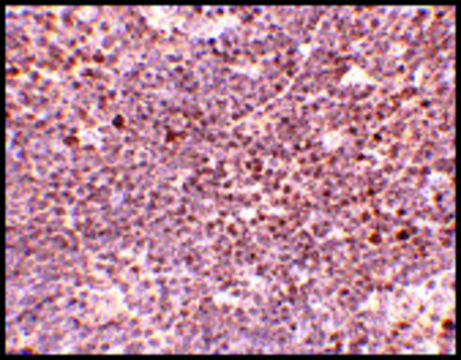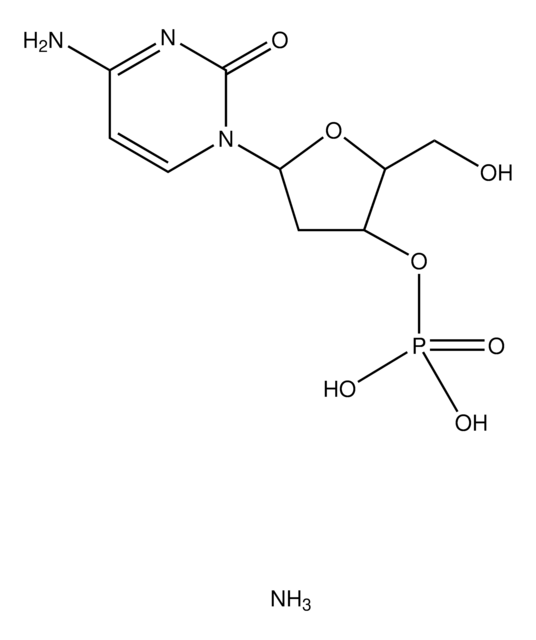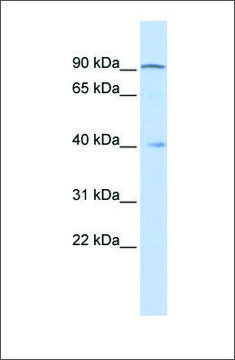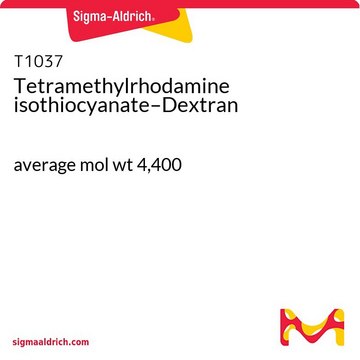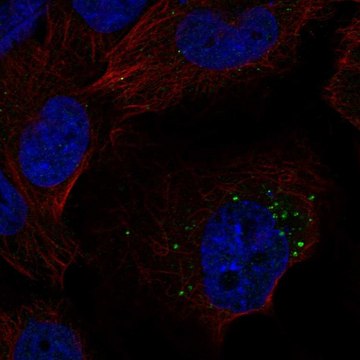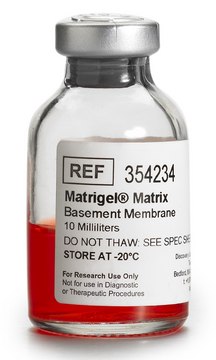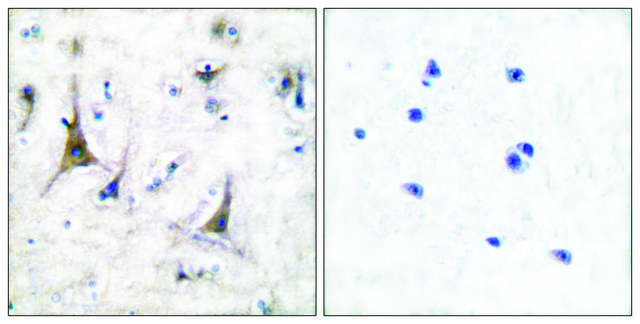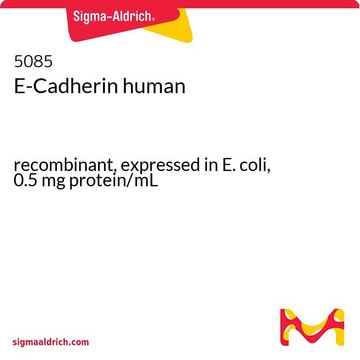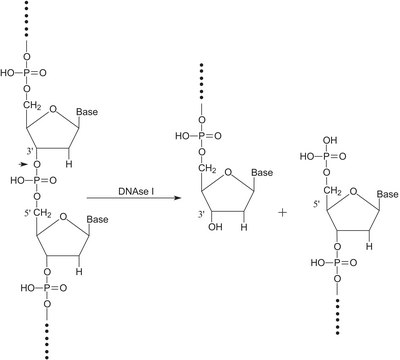E7403
Anti-S1P1, C-Terminal antibody produced in rabbit
~1 mg/mL, fractionated antiserum, buffered aqueous solution
Synonym(s):
Anti-EDG-1, Anti-Endothelial Cell Differentiation Gene-1
Sign Into View Organizational & Contract Pricing
All Photos(1)
About This Item
Recommended Products
biological source
rabbit
Quality Level
conjugate
unconjugated
antibody form
fractionated antiserum
antibody product type
primary antibodies
clone
polyclonal
form
buffered aqueous solution
mol wt
antigen ~44 kDa by SDS-PAGE
species reactivity
human
concentration
~1 mg/mL
technique(s)
western blot: suitable
UniProt accession no.
shipped in
wet ice
storage temp.
−20°C
Gene Information
human ... S1PR1(1901)
General description
Sphingosine-1-phosphate receptor 1 (S1P receptor 1 or S1P1), also known as endothelial differentiation gene 1 (EDG1) is a protein encoded by the S1PR1 gene in humans. It is a bioactive sphingolipid present at high concentrations in plasma and lymphatic fluid. S1P plays a critical role in regulating lymphocyte trafficking mainly through sphingosine-1-phosphate receptor 1 (S1PR1). It is a blood-borne lysosphingolipid that acts to promote endothelial cell (EC) barrier function. In plasma, it is associated with both high density lipoproteins (HDL) and albumin.
Immunogen
synthetic peptide (approximately 2.5 kDa) derived from the C-terminal region of the EDG-1/S1P1 receptor.
Application
Anti-S1P1, C-Terminal antibody produced in rabbit is suitable for western blotting at a working concentration of 5 to 10 μg/ml using RH7777 cells transfected with full-length EDG-1 receptor.
Biochem/physiol Actions
Sphingosine-1-phosphate (SPP) activates the heterotrimeric guanine nucleotide binding protein (G protein)-coupled orphan receptor EDG-1. EDG-1 is a high-affinity receptor for the bioactive lipid mediator SPP. It binds to SPP with high affinity and specificity. Overexpression of EDG-1 induces exaggerated cell-cell aggregation, enhances expression of cadherins and formation of well-developed adherens junctions. It is essential for lymphocyte egress from secondary lymphoid organs and acts as a validated drug target for the treatment of autoimmune diseases. Activated EDG-1 induces an immediate increase in intracellular calcium and is able to increase S1P1 phosphorylation.
Physical form
Supplied in phosphate buffered saline, pH 7.3, containing 0.08% sodium azide.
Disclaimer
Unless otherwise stated in our catalog or other company documentation accompanying the product(s), our products are intended for research use only and are not to be used for any other purpose, which includes but is not limited to, unauthorized commercial uses, in vitro diagnostic uses, ex vivo or in vivo therapeutic uses or any type of consumption or application to humans or animals.
Not finding the right product?
Try our Product Selector Tool.
Storage Class Code
10 - Combustible liquids
Regulatory Information
新产品
Choose from one of the most recent versions:
Already Own This Product?
Find documentation for the products that you have recently purchased in the Document Library.
Development of a selective S1P1 receptor agonist, Syl930, as a potential therapeutic agent for autoimmune encephalitis.
Jin J, Hu J, Zhou W, et al.
Biochemical Pharmacology, 90(1), 50-61 (2014)
Marco Antonio Morquecho-León et al.
Biochimica et biophysica acta, 1843(2), 327-334 (2013-11-19)
The role of protein kinase C (PKC) isozymes in phorbol myristate acetate (PMA)-induced sphingosine 1-phosphate (S1P) receptor 1 (S1P1) phosphorylation was studied. Activation of S1P1 receptors induced an immediate increase in intracellular calcium, which was blocked by preincubation with PMA.
M J Lee et al.
Science (New York, N.Y.), 279(5356), 1552-1555 (1998-03-21)
The sphingolipid metabolite sphingosine-1-phosphate (SPP) has been implicated as a second messenger in cell proliferation and survival. However, many of its biological effects are due to binding to unidentified receptors on the cell surface. SPP activated the heterotrimeric guanine nucleotide
C H Liu et al.
Molecular biology of the cell, 10(4), 1179-1190 (1999-04-10)
The endothelial-derived G-protein-coupled receptor EDG-1 is a high-affinity receptor for the bioactive lipid mediator sphingosine-1-phosphate (SPP). In the present study, we constructed the EDG-1-green fluorescent protein (GFP) chimera to examine the dynamics and subcellular localization of SPP-EDG-1 interaction. SPP binds
Michael J Kluk et al.
Laboratory investigation; a journal of technical methods and pathology, 93(4), 462-471 (2013-02-20)
Classical Hodgkin lymphoma (CHL), a neoplasm of abnormal B lymphocytes (Hodgkin-Reed-Sternberg (HRS) cells), has been described to have a typical pattern of clinical presentation and dissemination often involving functionally contiguous lymph nodes. Despite the progress made in understanding CHL pathophysiology
Our team of scientists has experience in all areas of research including Life Science, Material Science, Chemical Synthesis, Chromatography, Analytical and many others.
Contact Technical Service